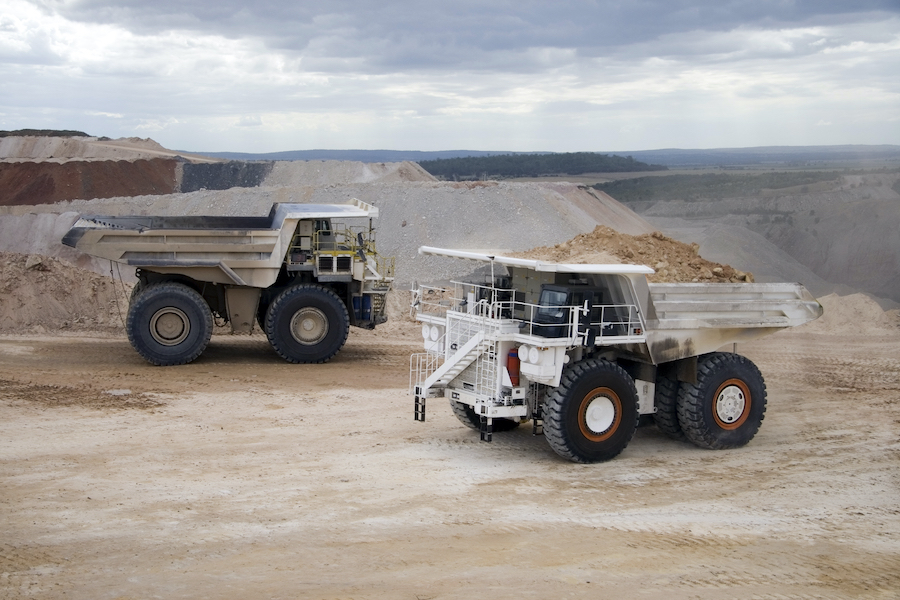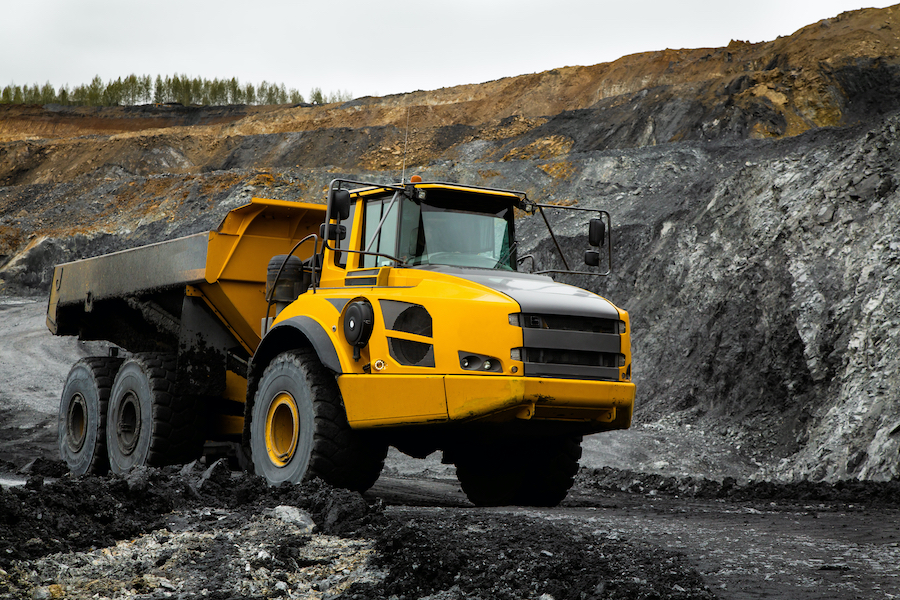View the complete article here.
A dump truck is a pretty standard piece of construction equipment. But standard doesn’t mean easy. When selecting the right dump truck, there are several things to consider. First and foremost is whether you should purchase a rigid or articulated dump truck.
Rigid
Robert T. Mawhinney, a Canadian inventor, created and patented what would ultimately become the dump truck in 1920. It was a “dump box” raised and lowered via a mast between the cab and the box that was powered by a winch and cable system.
On today’s rigid dump truck, the cab and the dump body sit atop a fixed chassis. It uses traditional rack-and-pinion steering. This is the classic dump truck most people are familiar with. It has a moving bed mounted to the truck’s fixed (rigid) frame. The truck has a single front steering axle and one to two rear axles. This enables the truck to handle more weight without impacting its power.
Articulated
Early iterations of articulated dump trucks (ADTs) were conceived back in the 1950s. They were just tractors that had reinforced wagons attached to them. A modern ADT is an off-road, all-wheel-drive vehicle. There is a hinge between the cab and dump box. Unlike a semi-trailer, the power unit is fixed. Hydraulic cylinders pivot the whole tractor. The trailer’s wheels and the front wheels follow along the same path. It has a low center of gravity and, along with the all-wheel-drive, it can handle nearly any rough terrain.
Technology
Rigid and articulated dump trucks have pretty much the same technology, such as the ability to monitor payloads, collision warning systems, and telematics. Both have traction and downhill speed control.
Job Requirements
There are several job requirements to take into account to determine whether a rigid or articulated dump truck will meet your needs. These include the type of job site, the type and weight of materials to be handled, the length of time the dump truck will remain on the site, and your budget.

Terrain
Rigid dump trucks are best in job sites with a graded surface. The rear-wheel drive limits the type of terrain they can handle. Job sites with well-established and well-maintained roads that are not too steep (generally 15-20% grades) are best for rigid trucks.
An ADT can handle hauling material over nearly any terrain. The six wheels (two more than a rigid dump truck has) and all-wheel drive enable the driver to go through muddy, slippery, and generally softer ground. The oscillating and articulating hitch allows maneuverability in harsh conditions. The design of ADTs keeps all six wheels close to the surface. This allows them to manage steeper grades up to 35%. They can handle rolling resistances of 20% as well as haul distances up to 10,000 feet.
Tires
Should you select an ADT, you’ll have three different types of tires to choose from: flotation, rock, or earthmoving. Rock tires have more rubber to protect the sidewall. Flotation tires are wider.
Maneuverability
ADTs are best in situations where maneuvering is challenging, such as tight switchbacks or low ceiling heights. With its wider tires and lighter weight as compared to a rigid truck, the load is more evenly spread out. This, along with its suspension system, allow ADTs to readily travel over uneven terrain. All of these factors make it easy to move an ADT from site to site. They are often the best choice for smaller job sites.
Load Size
Rigid dump trucks can handle much larger amounts of material. Rear-wheel drive makes them able to go longer distances with heavier loads. They can travel at higher speeds. That type of work will put too much wear and tear on an ADT. That said, the terrain will be more important than the weight of the material to be hauled. It will just mean you’ll need to make more trips. This has a limitation because ADTs just can’t carry the tonnage that rigid dump trucks can.
Length of Job
Rigid dump trucks are best suited for long term jobs with well-maintained haul roads. For example, a 20-30-year quarry or mine job. If you don’t need to move the dump truck from site to site, a rigid dump truck typically costs less overall.

Budget
Price is usually at that top of the list. It should be the last thing you consider. Determine your hard requirements, soft requirements, and “dream” requirements. Think about the types of jobs you will bid on now and in the future. Once you understand the type of dump truck you need, you can shop price.
Optional Equipment
Rigid dump trucks can have limited line of sight to what’s happening behind it. There are camera systems available to expand visibility. Orlaco has a SurroundView 360 camera system to allow the driver to see through all the typical blind spots on a rigid dump truck on one monitor.
Load ejector systems can reduce costs. For example, a telescopic hydraulic cylinder can push out material rather than dump it. This can reduce time on the job. A system to help dislodge sticky material, can reduce the time needed to clean the truck and lower the amount of lost wasted material. For example, the PHIL Load Ejector employs a series of overlapping plates that “… slide down and out of the body, hanging vertically, to eject sticky material.”
New or Used
It may be less expensive to buy a used dump truck. Sometimes it’s cheaper up front but costs you more to fix it later. That’s why you want to carefully inspect and research any dump truck you are considering. Especially ADTs that just have more parts to worry about. The lifespan of most ADT components is 9,000 to 15,000 hours. The frame itself could last up to 30,000 hours. If possible, drive that puppy uphill with a heavy load before you sign on the dotted line.
Conclusion
In many situations, an articulated dump truck offers more flexibility because of its ability to handle rough terrain and tight spaces. It has more components to maintain which can raise its overall cost of ownership. For long-term jobs on sites with well-maintained roads – or the need to carry huge loads a long way – a rigid dump truck is the way to go.
View the complete article here.
What are the key considerations when choosing between a rigid and an articulated dump truck?
Job requirements, terrain, load size, maneuverability, and budget are crucial factors to consider when deciding between a rigid and an articulated dump truck.
Which dump truck is better for challenging terrains and maneuvering difficulties?
Articulated dump trucks (ADTs) are better suited for challenging terrains and tight spaces due to their all-wheel drive, oscillating hitch, and wider tires, providing greater maneuverability.













































